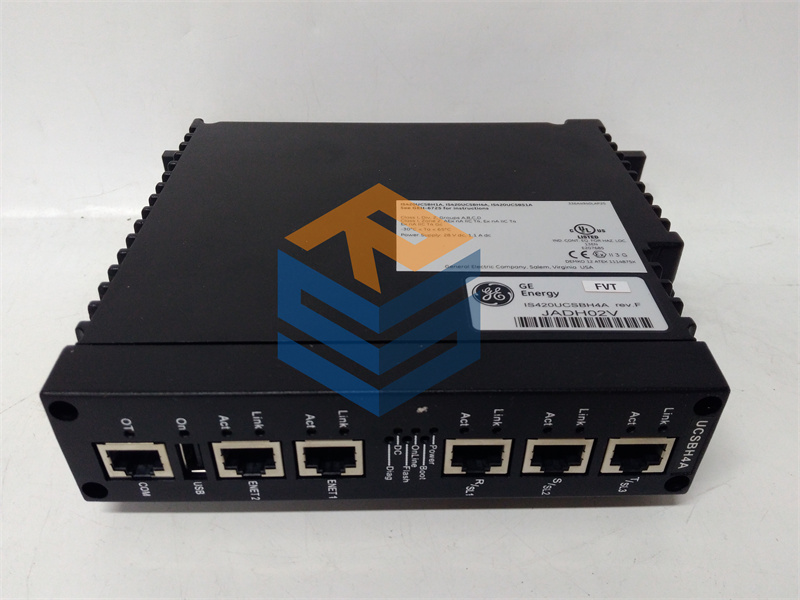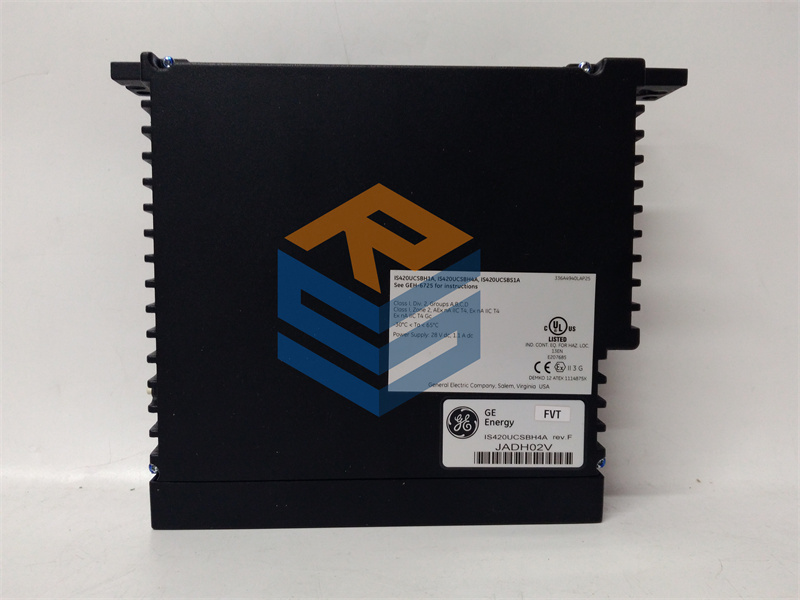The GE IS420UCSBS1A is a DCS (Distributed Control System) PLC (Programmable Logic Controller) module designed for use within GE’s Mark VIeS systems. Here’s a breakdown of the information you can expect:
Product Name: GE IS420UCSBS1A UCSB Controller Module (Safety)
Product Description: This module is a dedicated safety controller for GE’s Mark VIeS systems. DCS systems manage complex industrial processes, and PLC modules handle various control tasks. However, the IS420UCSBS1A focuses specifically on safety-critical functions within the Mark VIeS system.
Here are some possible functionalities:
- Safety Interlock Logic: The module might execute safety interlock logic to prevent unsafe operation of the controlled process. This could involve ensuring specific conditions are met before allowing certain actions or stopping equipment in case of a safety hazard.
- Emergency Shutdown Systems: It could play a role in initiating emergency shutdown procedures if critical parameters deviate from safe operating ranges.
- Safety Input/Output (I/O): The IS420UCSBS1A might have dedicated safety I/O channels for interfacing with safety sensors and actuators. Safety sensors would provide input on potentially hazardous conditions, and safety actuators could take corrective actions (e.g., stopping machinery) based on the module’s logic.
Product Parameters & Specifications:
Finding in-depth specifications online might be difficult due to the safety-critical nature of the module. These details are often restricted for authorized personnel. Here’s a general idea of what to expect:
- Safety Certification: The IS420UCSBS1A would likely be certified by relevant safety standards organizations to ensure it meets strict safety requirements for its intended application.
- Input/Output (I/O) Characteristics (if applicable): If the module handles safety I/O, it would have specifications for the number and type of safety input and output channels.
- Processing Power: The module would have sufficient processing power to execute safety logic reliably and meet real-time response requirements for critical situations.









